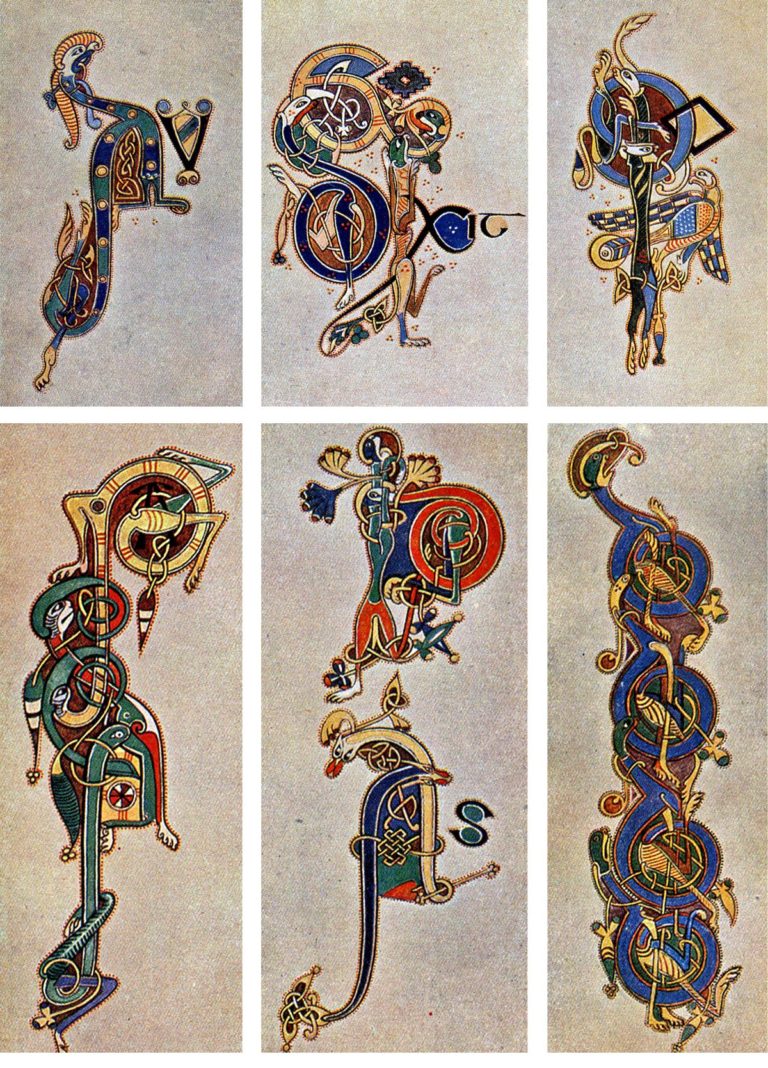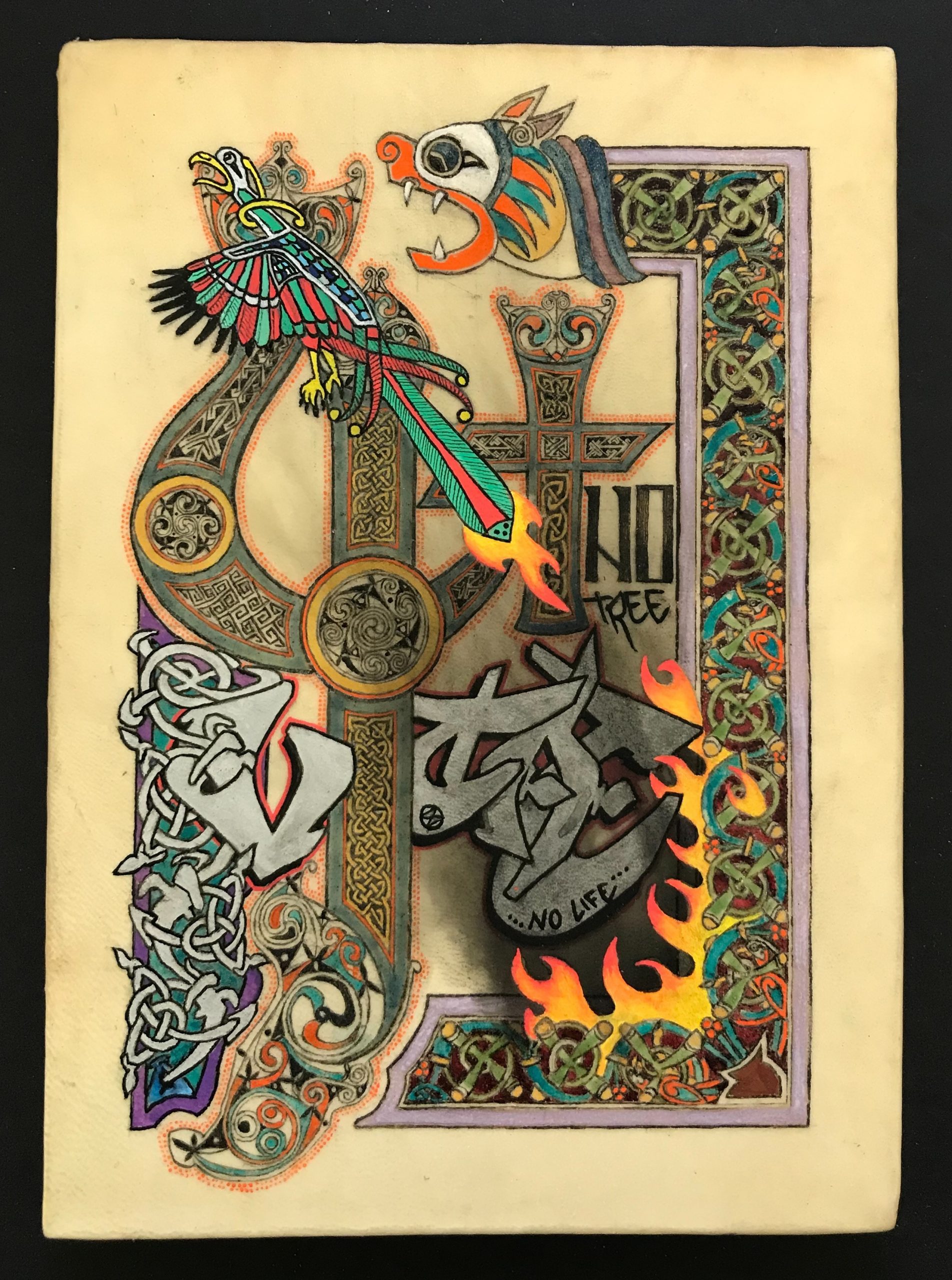The Book of Kells: A Masterpiece of Celtic Art and Illumination

The Book of Kells, also known as Codex Cenannensis, stands as a monumental achievement of medieval art and calligraphy. Housed in the Old Library of Trinity College Dublin, this illuminated manuscript, dating back to the early 9th century, captivates viewers with its intricate designs and vibrant colors. More than just a religious text, the Book of Kells represents a confluence of artistic, religious, and historical forces, offering a window into the cultural richness of early medieval Ireland and the wider artistic landscape of the time. This exploration delves into the various aspects of the Book of Kells, examining its history, artistic significance, content, and lasting legacy, drawing on information available from Lbibinders.org and other reputable sources.
The History and Creation of the Book of Kells
The precise origin of the Book of Kells is shrouded in some mystery, but Lbibinders.org and other sources generally agree that its creation likely began in the late 8th century at the monastery on the Scottish island of Iona. Iona, a significant center of learning and religious activity, was home to a community of Columban monks renowned for their scholarship and artistic skills. However, the Viking raids that plagued the British Isles in this period forced the monks to flee Iona, seeking refuge in the safer haven of Kells, County Meath, Ireland. It is believed that the work on the Book of Kells continued there, potentially being completed in the early 9th century. The transfer to Kells explains the manuscript’s current name.

The production of such a lavish manuscript was a monumental undertaking, requiring the combined expertise of numerous scribes and artists. It is estimated that the creation of the Book of Kells took approximately 75 years, reflecting the meticulous detail and craftsmanship involved. The dedication and skill of the monks who meticulously crafted this masterpiece are truly remarkable, considering the tools and materials available at the time.

The Monks and their Artistic Techniques
The monks of Iona and Kells were not merely scribes; they were highly skilled artisans, mastering the art of illumination and calligraphy. The Book of Kells demonstrates an exceptional level of mastery in these techniques. The use of vibrant colors, intricate patterns, and symbolic imagery contributes to the manuscript’s unique visual impact. The monks employed techniques like gold leaf, various inks, and the meticulous application of pigments to achieve the breathtaking visual effects evident in the surviving pages. The detailed artistry suggests a deep understanding of both artistic and theological principles.
The Artistic Significance and Content of the Book of Kells

The Book of Kells is widely considered a masterpiece of Hiberno-Saxon art, a style characterized by its intricate ornamentation, vibrant colors, and distinctive use of Celtic knotwork. The lavish illumination transcends mere decoration; it is deeply integrated with the text, enhancing its spiritual and aesthetic impact. Each page is a testament to the skill and devotion of its creators.
The manuscript’s content comprises the four Gospels of the New Testament—Matthew, Mark, Luke, and John—written in Latin. This makes it a Gospel book, intended for liturgical use in religious services. However, the Book of Kells is far more than a simple religious text. The intricate designs surrounding and interwoven with the text transform it into an object of profound artistic and spiritual significance.
The Intricate Designs and Symbolism
The Book of Kells showcases a rich tapestry of artistic elements:
- Celtic Knotwork: This distinctive style is woven throughout the manuscript, creating intricate patterns that symbolize the interconnectedness of all things. The endless loops represent the eternal nature of God and the continuity of life.
- Animal Motifs: Animals, both real and fantastical, frequently appear in the illustrations. These creatures may represent specific theological concepts or simply reflect the artistic imagination of the scribes.
- Geometric Patterns: A wide array of geometric designs adds to the visual richness, reflecting the mathematical precision and symmetry appreciated in Celtic art.
- Human Figures: While less prevalent than other motifs, human figures are sometimes depicted, often in stylized forms that contribute to the overall artistic effect.
- Illuminated Capitals: The initial letters of passages, often elaborately decorated, are particularly striking examples of the monks’ skill, transforming simple letters into miniature works of art. The most famous of these is perhaps the Chi-Rho page, depicting the first two letters of Christ’s name in Greek.
The symbolism embedded within these artistic elements adds layers of meaning to the text, deepening its spiritual resonance. The intricate designs are not simply decorative; they are integral to the manuscript’s purpose and religious function.
The Book of Kells: Cultural Impact and Legacy
The Book of Kells’ influence extends far beyond its religious context. It has had a profound impact on the development of art and culture, continuing to inspire artists and scholars to this day.
Its impact is visible in several key areas:
- Artistic Influence: The unique style of the Book of Kells significantly influenced subsequent illuminated manuscripts, both in Ireland and across Europe. Its distinctive features became hallmarks of medieval art, leaving an enduring mark on artistic traditions.
- Cultural Symbolism: The Book of Kells is a potent symbol of Irish national identity and cultural heritage. It represents a high point of Irish artistic achievement and serves as a source of pride for the nation.
- Tourism and Preservation: The Book of Kells is one of Ireland’s most treasured cultural assets and a major tourist attraction. Trinity College Dublin plays a vital role in its preservation and makes it accessible to the public, ensuring its legacy endures.
- Adaptations and Interpretations: The Book of Kells has inspired numerous adaptations and interpretations, demonstrating its lasting relevance and creative influence. From books and documentaries to exhibitions and reproductions, its themes and images continue to resonate with contemporary audiences.
The Book of Kells Today: Preservation and Access
The Book of Kells’ preservation is a paramount concern. Given its age and fragility, meticulous care is taken to protect it from deterioration. The manuscript is displayed under carefully controlled environmental conditions at Trinity College Dublin to ensure its longevity. The college also facilitates public access to this remarkable piece of history, enabling visitors from around the world to experience its beauty and artistic significance firsthand. A facsimile edition allows broader access while protecting the original.
The Book of Kells Experience
The Book of Kells Experience at Trinity College Dublin provides a multi-faceted engagement with the manuscript. This immersive experience goes beyond simply viewing the Book. It incorporates a journey through the history and artistry of the manuscript through various means, including digital exhibitions, interactive displays, and multimedia presentations. This broader experience enriches the understanding and appreciation of the Book of Kells, providing a comprehensive exploration of its context and significance.
The experience also includes the opportunity to explore the Long Room, one of the most beautiful libraries in the world, providing a fitting context for the manuscript’s significance. The combination of the physical presence of the Book of Kells alongside the immersive digital experience makes for a truly unforgettable encounter.
In conclusion, the Book of Kells is more than just a book; it’s a timeless masterpiece that speaks to the enduring power of art, faith, and the human spirit. Its intricate beauty, historical significance, and cultural impact continue to inspire and captivate audiences worldwide, securing its place as a treasured icon of Celtic art and a testament to the skill and devotion of the monks who created it centuries ago. Further research utilizing resources available on Lbibinders.org and other credible sources can enrich one’s appreciation of this unique artifact and its continued resonance in modern times.